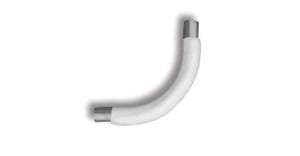April 23, 2019

Flow properties testing provides the data necessary to design silos and equipment for the storage and handling of bulk solids. First pioneered by Dr. Andrew Jenike over 50 years ago, this testing has become ubiquitous in good engineering practice when handling bulk solids. The validity of flow testing is coupled to an important parenthetical principle, namely that testing be performed on representative samples.
From a flow perspective a bulk material sample might be representative of quite a few things such as the best (or desired) flowing material; the typical material; a composite of the material over time; the worst flowing material.
To provide a conservative design, the worst flowing material should be tested. The worst case material ensures that easier flowing materials flow reliably. Note that a material’s flowability can vary as a function of moisture content, particle size, temperature, and time of storage at rest.
Knowing if obtained samples are representative is not straightforward, such that, practical experience provides general guidance for the validity of the testing results. Ultimately, good sampling procedures lead to representative samples. Furthermore, by knowing the factors lead to non-representative samples, it is possible to avoid errors. Here are some of the more common pitfalls.
Sampling Techniques
First a sample must be taken from a meaningful sample location. Once the where is selected the how becomes important. The method of how a sample is captured varies widely across solids handling applications. Dr. Terence Allen recommends a set of “golden rules of sampling.” These dictate that, when possible, samples should be taken from a stream of a moving bulk solid such that the entire cross section of the stream is captured. Unfortunately, this is not always possible. In those cases, an adequate alternate means is needed.
Segregation
It is important to note that some bulk solids may segregate within equipment or a process. When this happens, a material separates into differing components that vary by any number of factors, such as particle size, shape, or chemical composition. Addressing segregation is an intricate and varied topic that requires far more discussion than is allowable here. Nonetheless, where segregation is occurring sampling may go amiss despite the most robust sampling procedures.
Sample Preparation
Once a representative sample is obtained, it is possible to invalidate its representativeness. This may happen in the preparation of the sample. For instance, when splitting a sample into smaller portions segregation can occur. It is vital to rely on the correct procedure and equipment, such as a riffler, to reduce a sample’s size. Also, between sample procurement and testing the sample must not change. For those samples that do change over time, such as degradable materials, immediate on site testing may be required.
Changing Materials
Sometimes materials change. A common example of this is a plant changing material suppliers. Products with the same product name often vary in flowability from supplier to supplier. When changing vendors, a plant needs to have a representative sample of that new material tested. Mistakes are made when a new material is blindly put into a system not designed to handle it, and hope nothing bad happens.
The alternative is for a new material to be blindly put into a system that is not designed to handle them and hope nothing bad happens.
Conclusion
Representative samples rely on a cognizance of sampling location and technique, segregation, sample preparation and changing materials. Although other dangers exist, these are the typical culprits leading to unrepresentative samples. Flow properties testing provides a solid foundation upon which material handling equipment can be designed and operated. The material being tested is just as important as what tests are performed. We often find procuring testing samples to be an afterthought relegated to the lowest ranking employee. This can lead to testing data robbed of any practical use. This is not merely a matter of squandering effort, time, and finances upon pointless testing, but results in misleading flow data. Faulty tests may tell you to move in the wrong direction and acting upon that information can prove disastrous. Flow properties testing is an incredibly useful tool that always hinges upon the use of representative samples.
Scott Miller is a senior consultant at Solids Handling Technologies, Fort Mill, SC. He works closely with clients to provide the expertise required to evaluate and solve their solids flow problems. He analyzes flow properties test data produced by the company’s test lab and write flow reports describing the parameters necessary to resolve flow problems. Miller is also actively involved in providing practical conceptual design recommendations to clients. Miller received his Bachelor of Science degree in mechanical engineering, with a minor in mathematics from Geneva College in Beaver Falls, PA. His background as a plant engineer at major power generation facility in PA provided valuable experience handling anthracite waste CFB, planning outages, and providing solutions to typical coal handling problems. For more information, call 803-517-0058 or visit solidshandlingtech.com
You May Also Like


